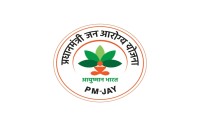BENEFICIARY LEVEL
- Government provides health insurance cover of up to Rs. 5,00,000 per family per year.
- More than 10.74 crore poor and vulnerable families (approximately 50 crore beneficiaries) covered across the country.
- All families listed in the SECC database as per defined criteria will be covered. No cap on family size and age of members.
- Priority to girl child, women and and senior citizens. Free treatment available at all public and empaneled private hospitals in times of need. Covers secondary and tertiary care hospitalization.
- 1,593 medical packages covering surgery, medical and day care treatments, cost of medicines and diagnostics.
- All pre-existing diseases covered. Hospitals cannot deny treatment. Cashless and paperless access to quality health care services.
- Hospitals will not be allowed to charge any additional money from beneficiaries for the treatment.
- Eligible beneficiaries can avail services across India, offering benefit of national portability. Can reach out for information, assistance, complaints and grievances to a 24X7 helpline number – 14555
HEALTH SYSTEM
- Help India progressively achieve Universal Health Coverage (UHC) and Sustainable Development Goals (SDG).
- Ensure improved access and affordability, of quality secondary and tertiary care services through a combination of public hospitals and well measured strategic purchasing of services in health care deficit areas, from private care providers, especially the not-for profit providers.
- Significantly reduce out of pocket expenditure for hospitalization. Mitigate financial risk arising out of catastrophic health episodes and consequent impoverishment for poor and vulnerable families.
- Acting as a steward, align the growth of private sector with public health goals.
- Enhanced used to of evidence based health care and cost control for improved health outcomes.
- Strengthen public health care systems through infusion of insurance revenues.
- Enable creation of new health infrastructure in rural, remote and under-served areas.
- Increase health expenditure by Government as a percentage of GDP.
- Enhanced patient satisfaction.
- Improved health outcomes.
- Improvement in population-level productivity and efficiency.
- Improved quality of life for the population.



